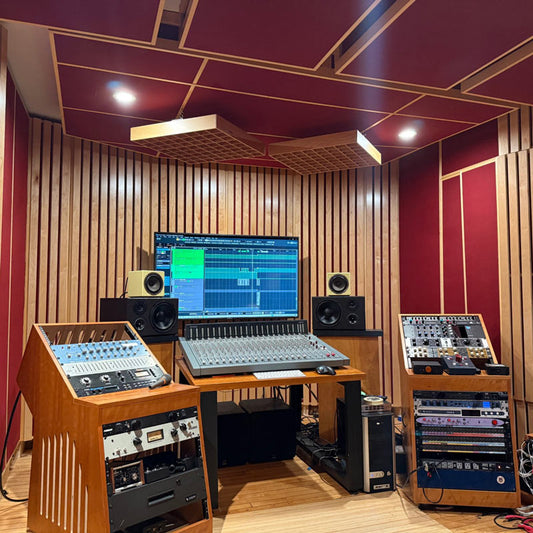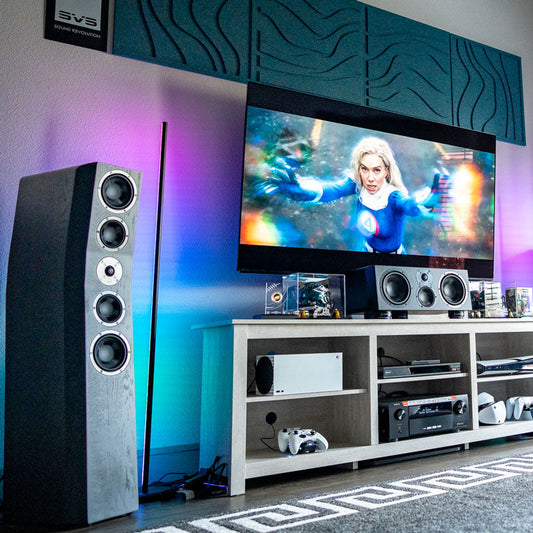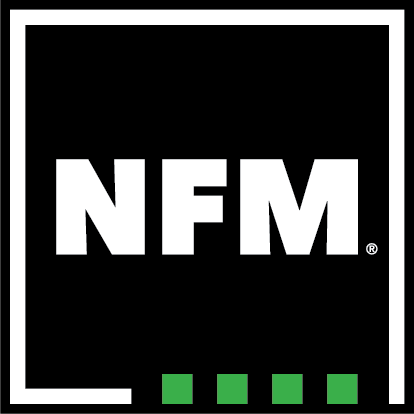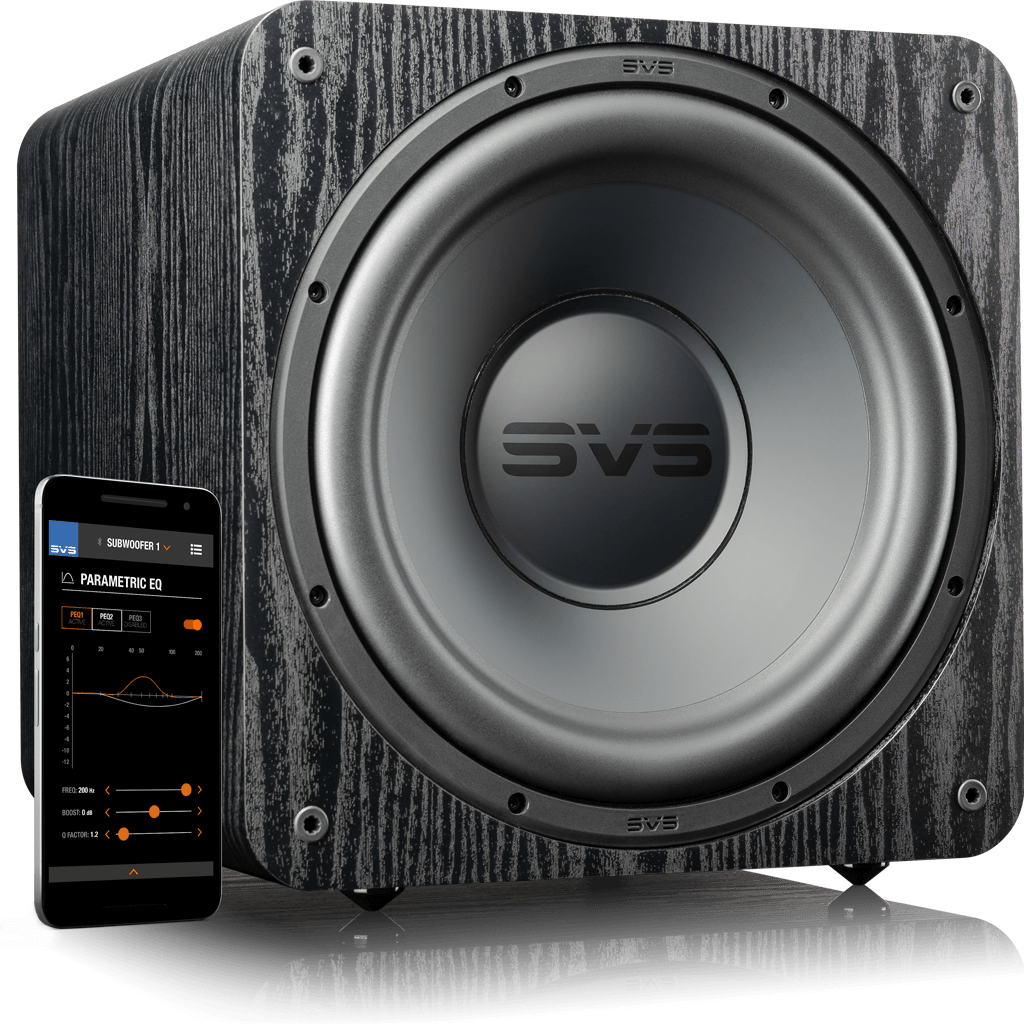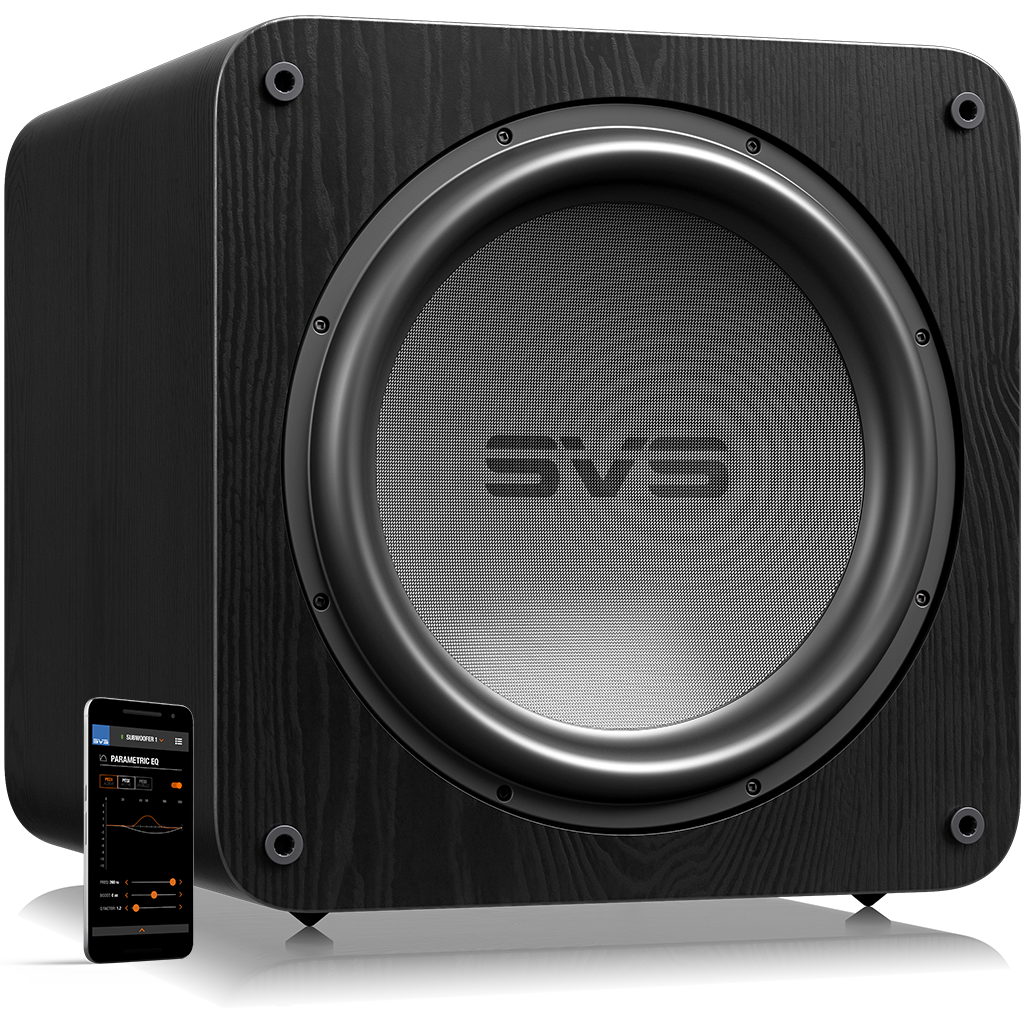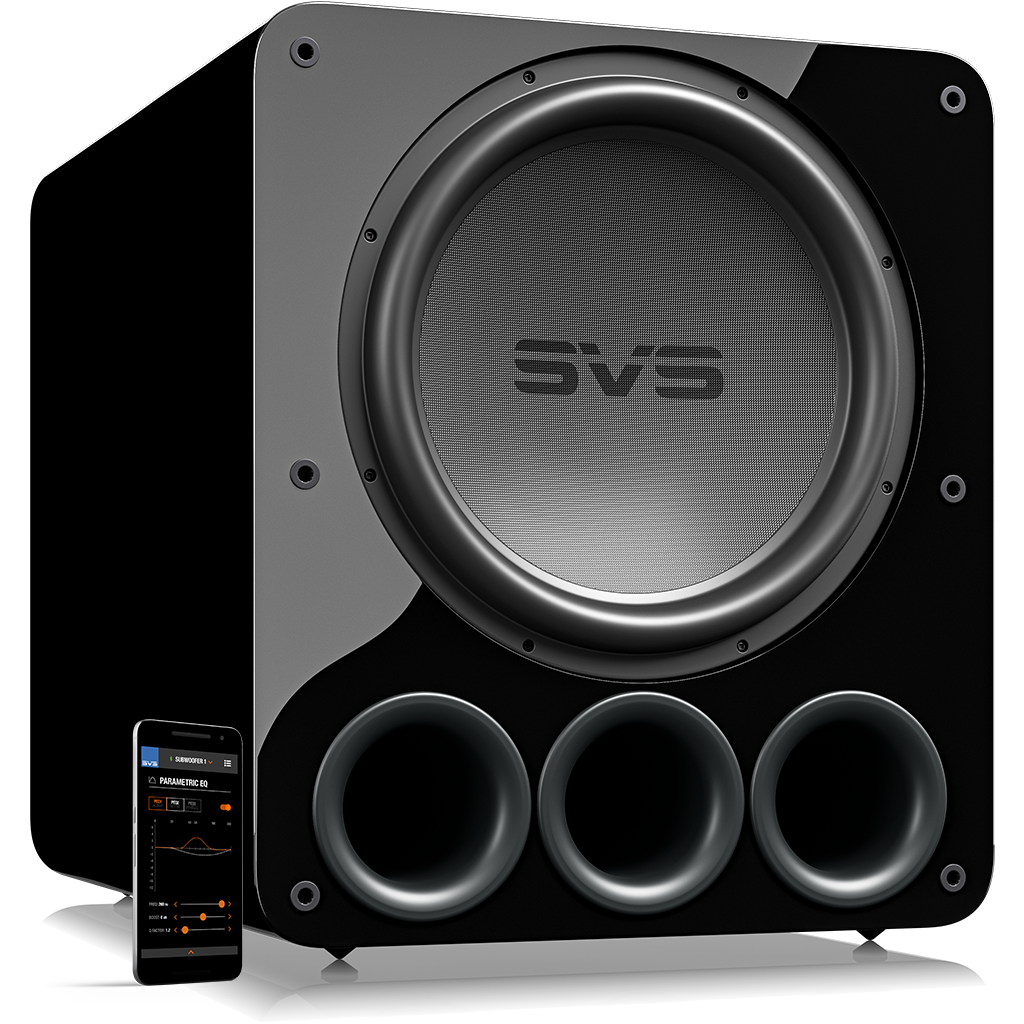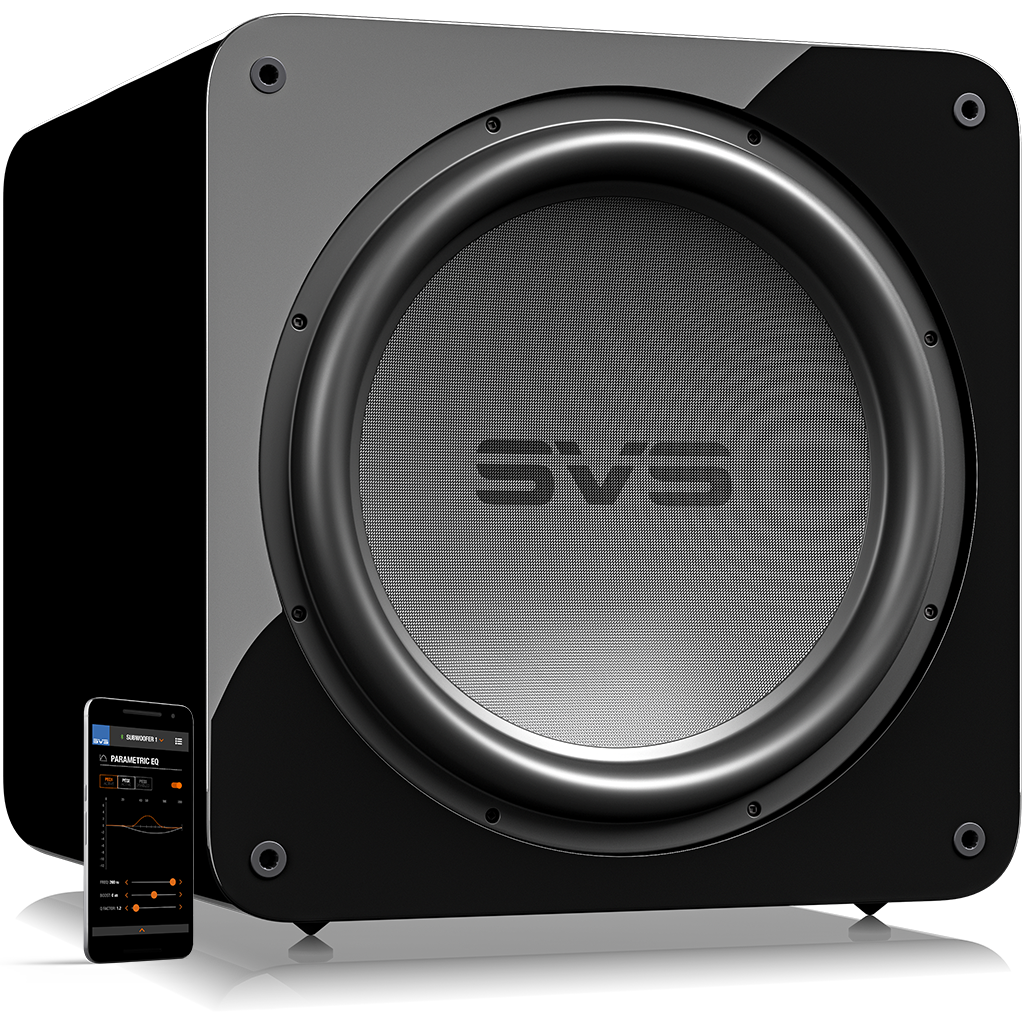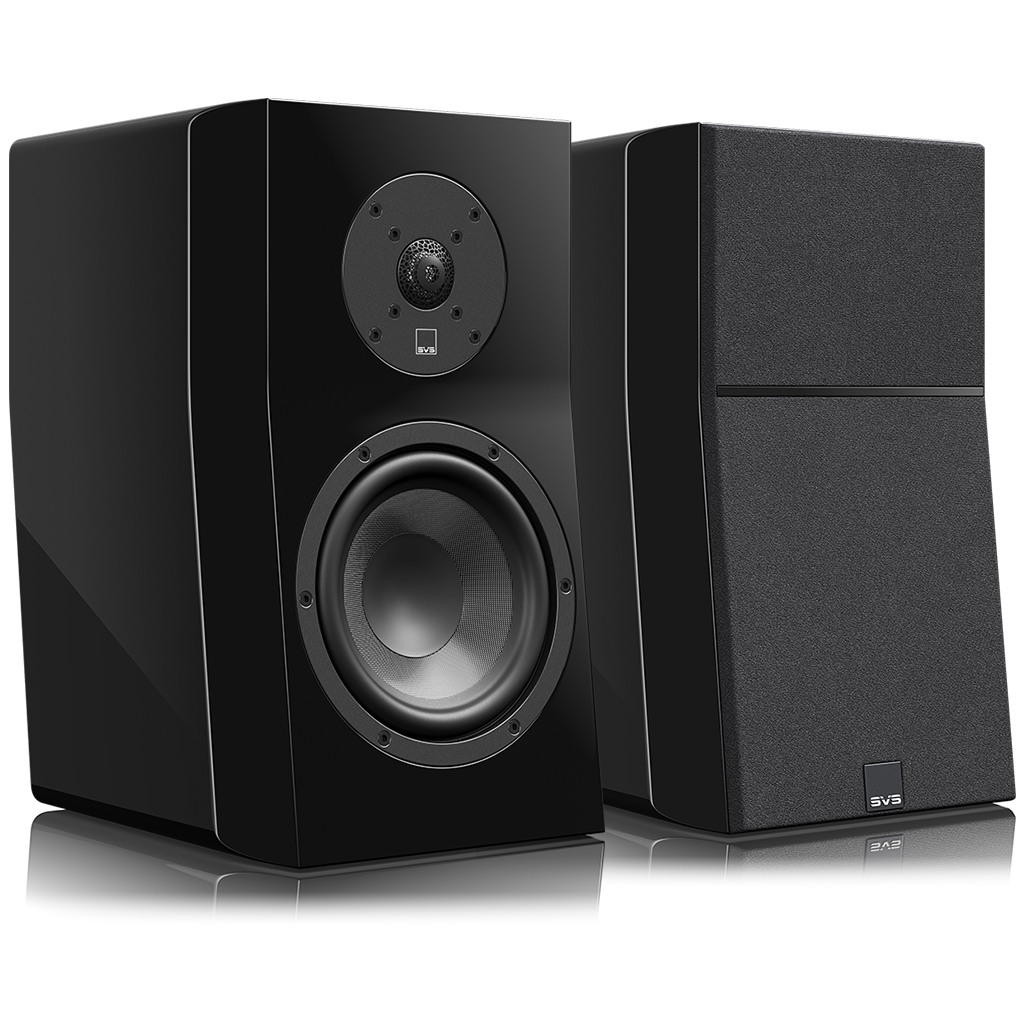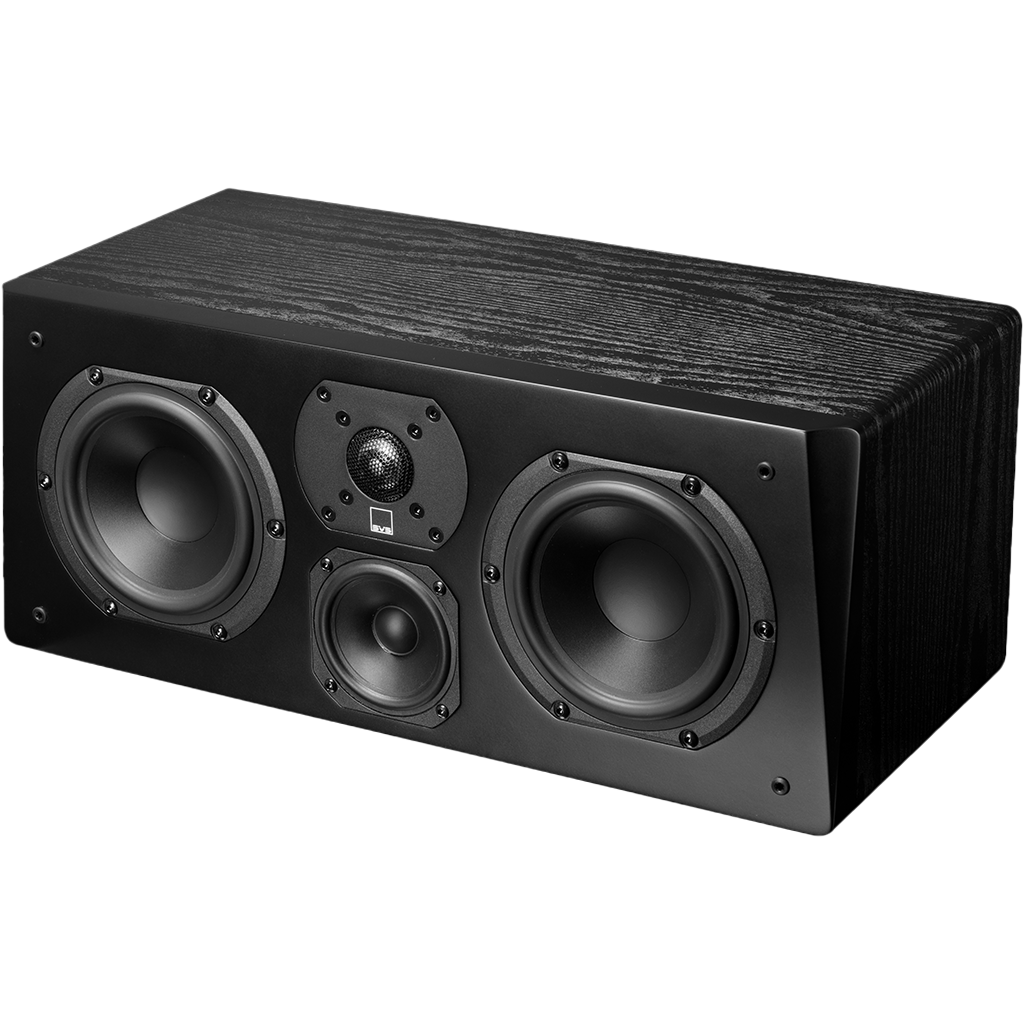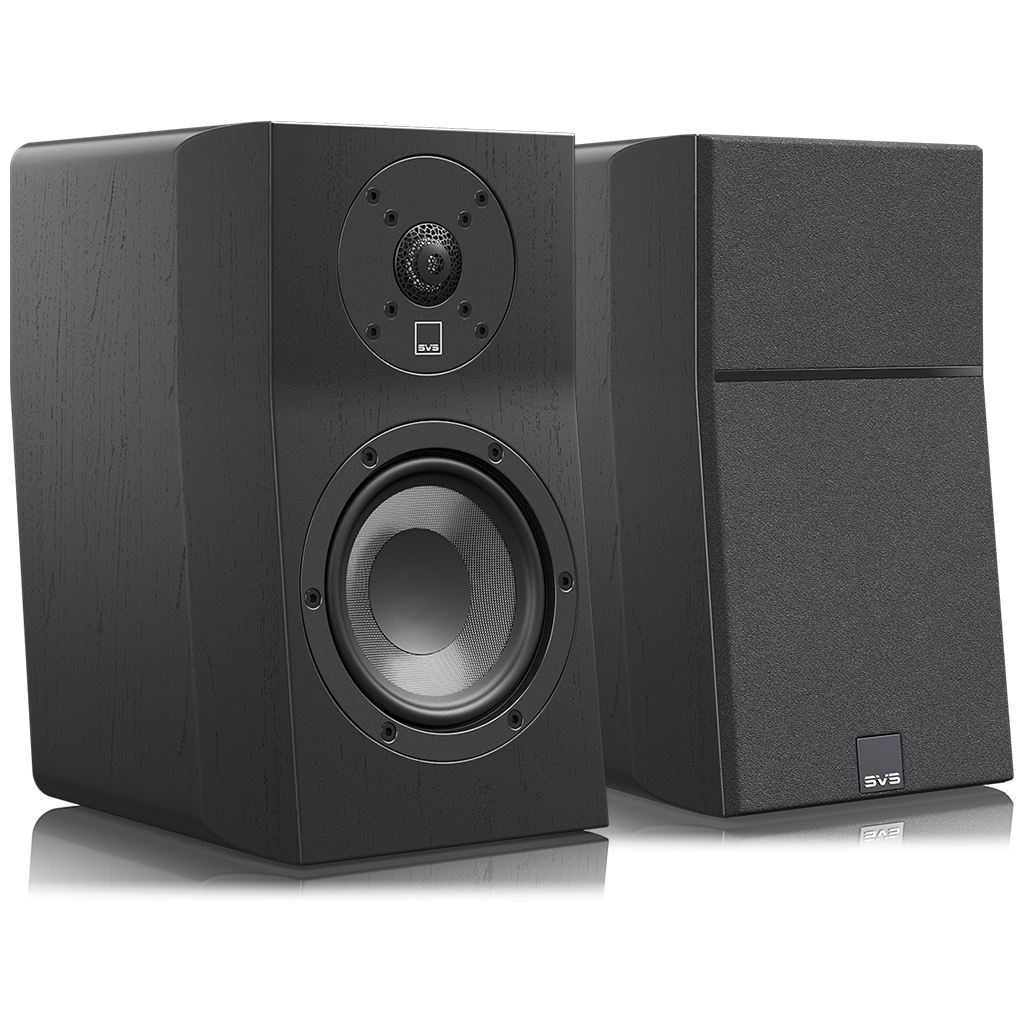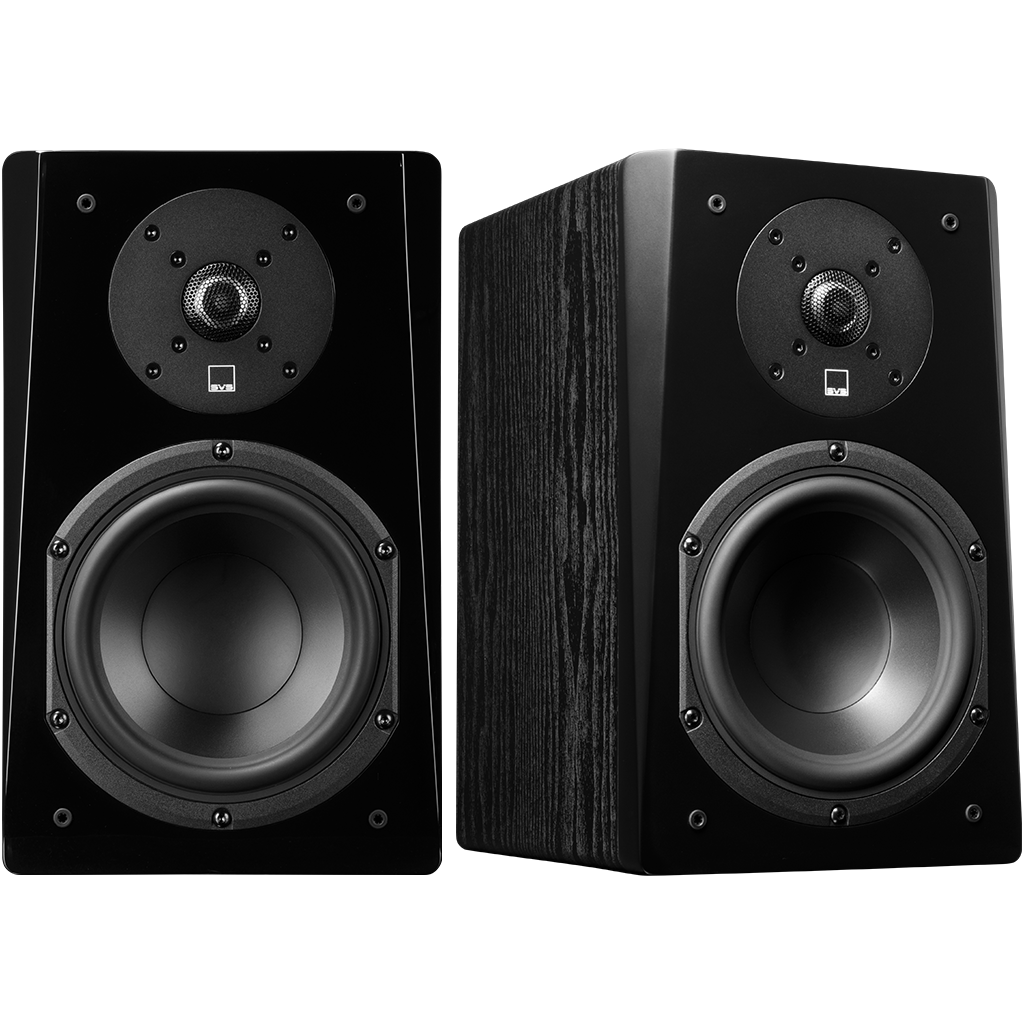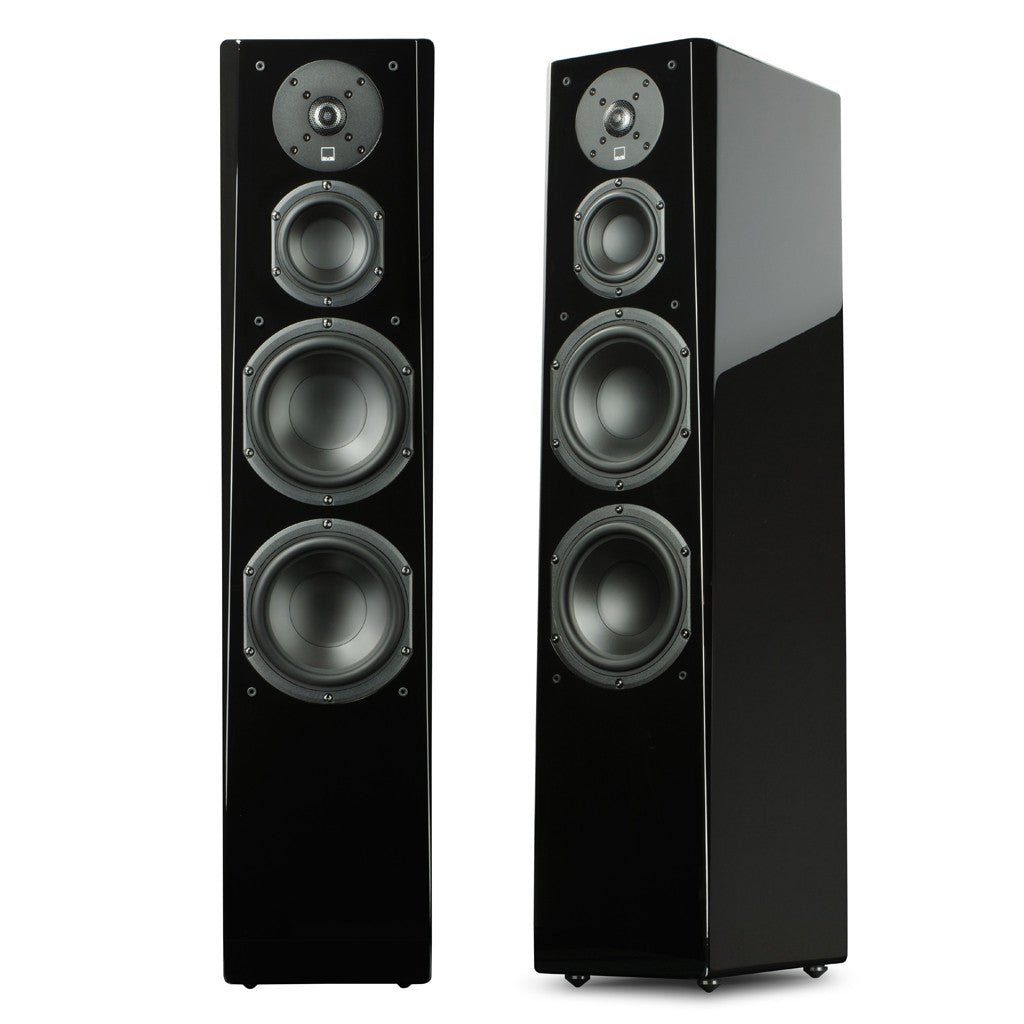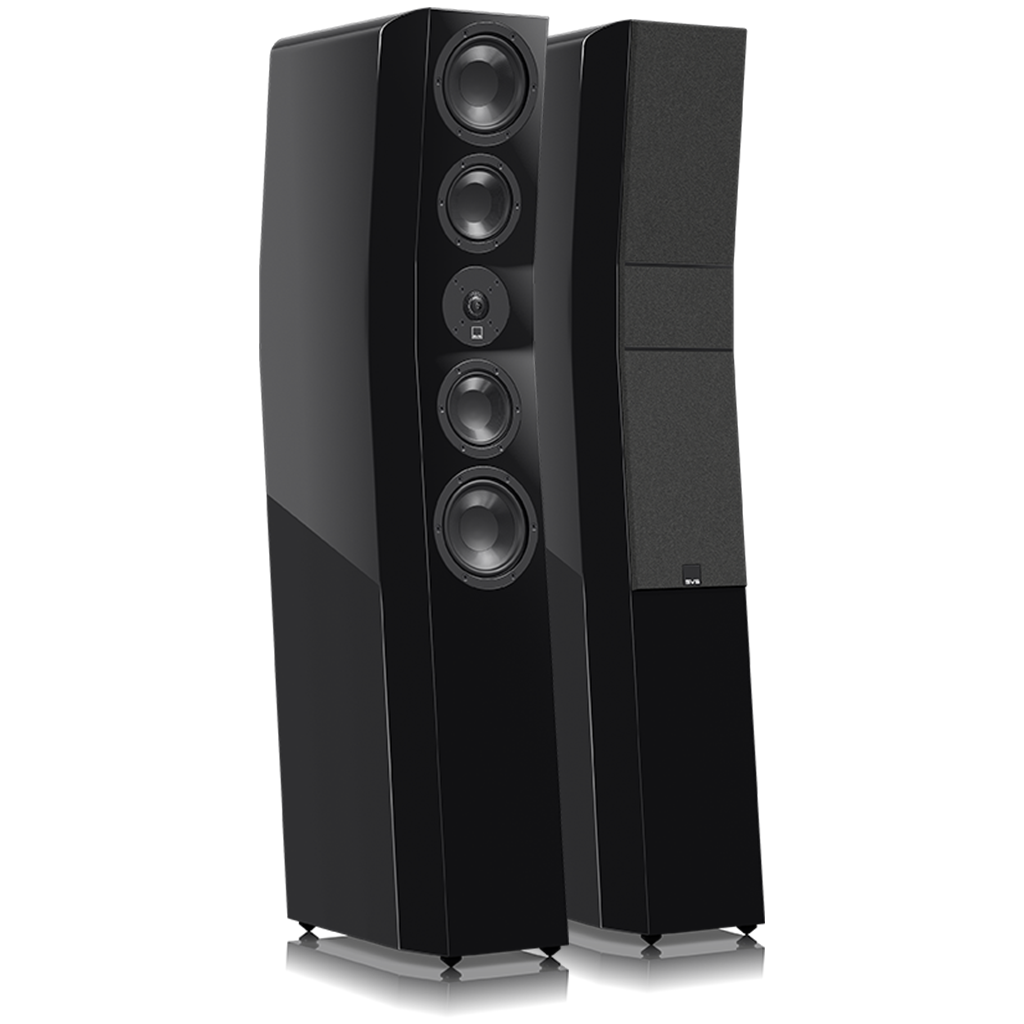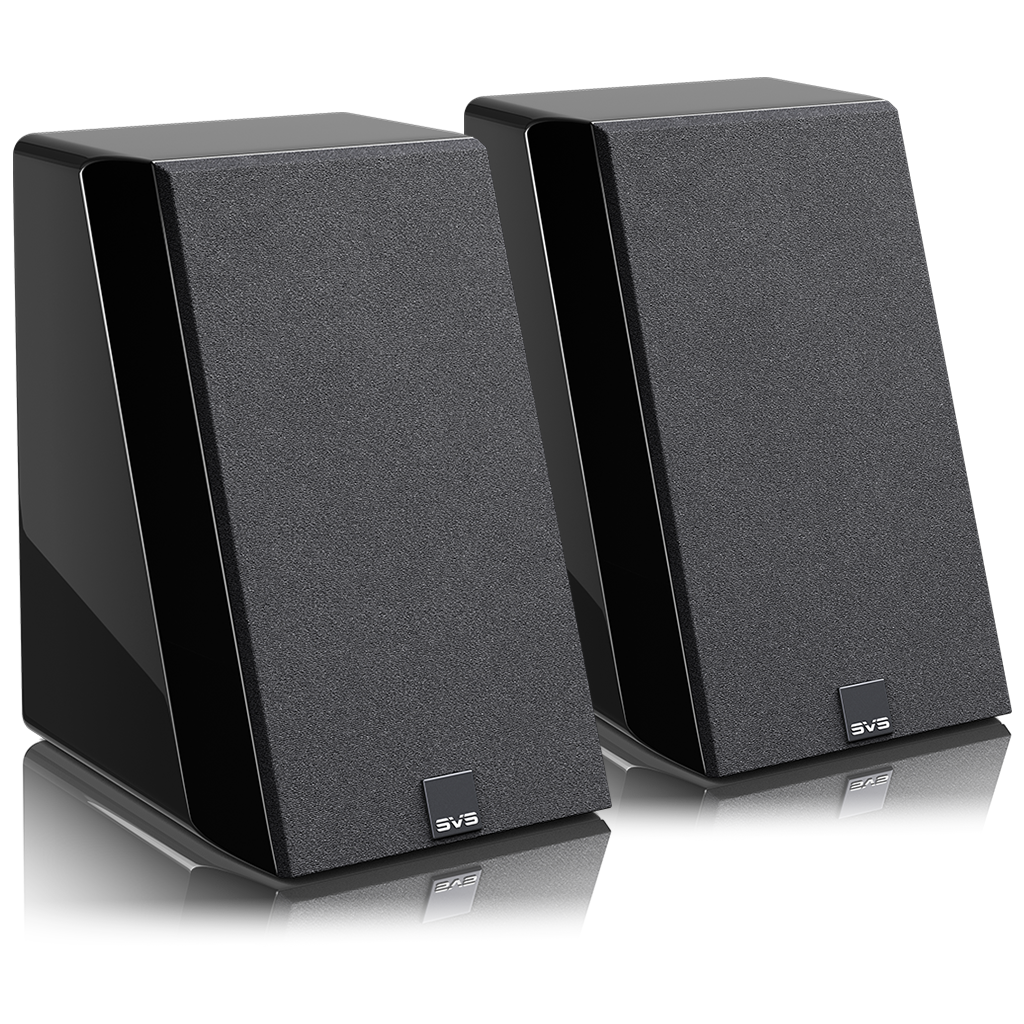Professional Pipe Organ Practices at Home with Help of Ported SVS Subwoofer
James in Norman, OK
SVS subwoofers most often handle the bass for music and home theater systems, but it’s not uncommon for our subs to appear in pro audio set-ups and other surprising places. James from Oklahoma may have the most unexpected featured system we’ve come across so far. The piano and pipe organ prodigy employs an SVS PB-2000 Subwoofer to handle the bass notes for his high performance pipe organ that reaches down to the 16Hz range. In this Q&A, James discusses his set-up and the “physical thrill” of having his SVS subwoofer.
The Setup:
- PB-2000 Subwoofer
- 2 KRK Rokit 8 (G2)
- 2 Equator Audio d5
- 6 PreSonus Eris E5
- 27" iMac loaded with 32gb ram driving the organ program Hauptwerk
- Hauptwerk in turn feeds 4 stereo pair through a Focusrite Saffire Pro 40 (using all 8 balanced outs) and another stereo and sub ouput via a Nuforce uDAC
- Second monitor on top of the organ connected via a 25' HDMI cable to view the organ program while in use
- The organ is a Johannus Sweelinck 30 with MIDI capability, connected to the computer via an iConnectMidi2 (I only use sounds from Hauptwerk; I do not use any of the Johannus sounds.)
Questions And Answers:
What function does the subwoofer play in your set-up?
The subwoofer provides all the pedal or low note "oomph" of the organ; the gravitas, so to speak. Organs are massive instruments with massive numbers of pipes, each producing an individual note. The largest pipes are played by the feet and are often produced by pipes up to 32' in length weighing hundreds of pounds each. The amount of energy they put into a room is naturally quite impressive and moving (literally). My PB-2000 does a "noteworthy" job reproducing those pressures at home. I've set up my signal paths so that the sub can serve in a simpler 2.1 system for regular music listening as well.
How has the SVS subwoofer impacted the overall performance?
How hasn't it?! Before I had my first sub, my brain would "fill in," so to speak, the missing notes; now I actually hear them being reproduced around me. This sub has added a visceral impact to my playing environment. Hearing those low pitches infuses the playing experience with a real energy that would be lacking otherwise. Real organs can literally shake you; it's partly what makes them such a thrill to play. Many people love to go to live rock concerts because they provide a physical thrill... the energy is just so much higher than when you listen with headphones or in your car. Organs essentially provide the classical music equivalent of that effect. Did you hear that?! THAT WAS AWESOME! Now, in the comfort of my own home, I get that type of thrill.
Any specific moments which really exemplify why having a great subwoofer is important?
Even outside of the nerdy organ world, most audiophiles know about Saint-Saens' famous "Organ Symphony" (Symphony No. 3, Op. 78). I've read many blogs & articles and it is a go-to test track for many sub reviewers. The reason? The organ's lowest pedal notes go all the way down to a genuine 16hz. I love it for another reason: I am a classically trained organist who also spent a semester abroad in Paris and I have walked in Saint-Saens' shadows. This symphony is a phenomenal triumph of western art music and one of the few secular pieces that really brings the organ out into the public spotlight. I have heard countless recordings of this famous work by multiple orchestras, but I had never really heard it the way I heard it after I bought this sub.
After hooking up the sub for the very first time, I cued up a BBC Proms recording done in Royal Albert Hall, London with the world-famous Willis/Mander organ (the second largest organ in all of Great Britain). At one point during this particular recording a soft 32' stop comes on to undergird the whole orchestra; I nearly fell out of my chair in shock! I had listened to this recording multiple times and had completely missed this aspect of the recording every time. It is not so much heard as felt. My eyes widened and I grinned at my wife as things started rattling in the room. The bass head that I am (all organists are) I have honestly never even heard this low octave present in the recording. Not only was I hearing it for the first time, I was feeling it---it was like I was actually in Royal Albert Hall shaking in my seat. You simply have no idea what you are missing in some great recordings until you experience it!
What is the backstory behind your playing of the pipe organ? Do you perform live, record music, both?
I grew up playing piano by ear as a child and was always fascinated with the organ at our church. When I was about 8 years old I was taking music lessons at a local music school and saw a poster that showed different keyboard instruments. I saw a picture of a few organ consoles and a dual manual harpsichord for the very first time. "How cool!" I thought. "It must be awesome having more than one keyboard to play." Indeed it is. Many years later I was taking lessons from someone who was also an organist. Without telling my parents I asked him if he would teach me organ instead. I couldn't explain the fascination. All I know is that the first time I heard Widor's famous Toccata I simply knew I HAD to learn to play that! The rest is history as they say. With only 2.5 months of organ lessons under my belt I started auditioning at music schools and a few months later I ended up at DePauw University as happy as I'd ever been in my life.
While I do not actively concertize at the moment, I am the organist at St. Mary's Catholic Church in Guthrie, OK and I play every Sunday. With a 10-month old baby and another full-time job, you can imagine I'm rather busy most days. I do, however, make occasional recordings with my home organ using the program Hauptwerk. I do, however, have quite a long laundry list of things I would like to record once I can devote a little more time to practicing again.
Why is having a great subwoofer important to you?
Having a great subwoofer was something of a necessity for me. Your average run-of-the-mill sub can't handle organ duty. It either won't dig deep enough, or, it will burn up with the long sustained tones produced by the organ. We all know that some people love to tote 'peak' specs and then quietly mumble the RMS capability. I needed to have something over-engineered that could keep up. Add to that my musician's ear; I didn't want something that would simply wallop me in the back... I needed finesse too. Like I mentioned with the Saint-Saens: you can't experience music in its full splendor unless you have a solid foundation for the rest of the music to rest upon. I suppose there was a bit of obsession as well---somewhat akin to a car-lover's need to have a souped up engine in their car, or a hard-core gamer to have the best graphics card and biggest monitor they can get their hands on, or a photographer to have the best camera and best lenses they can afford... A bit manic perhaps, but we all know it's just not as much fun to have it any other way!
Any challenges connecting your subwoofer to the pipe organ? How did you overcome them?
In my particular case, I was dealing with all sorts of complexity. Between 10 discreet signal paths on two output devices, with even more wizardry going on in the computer software driving the organ and parsing out its thousands of audio signals, I had a plethora of decisions to make. I suppose the only difficulty, if you can even call it that, was that this particular model does not include a balanced XLR input, so I naturally had to use the line-level input. Since I am dealing more with computer audio interfaces, rather than commercial amplifiers, that changed my initial approach a bit. The maze of wiring going on behind the organ is a sight to behold!
The SVS PB 2000 and the KRK Rokit 8's are connected via the Nuforce uDAC (with splitter). Sub is crossed at 80Hz. This group takes all my pedal signals with the sub pulling the low end and the KRK's fleshing out the upper harmonics. Having them attached this way makes for a very easy stereo+sub setup when I'm not using Hauptwerk and simply watching videos on the web or listening to music, etc. That way I can avoid the complexity of rerouting signals in the Saffire when not being using Hauptwerk. The Equators and Erises are connected to the Saffire Pro 40 and take all the manual divisions (keyboard sounds). The hundreds of samples are intelligently divided between all of the Eris stereo pairs while the Equators produce a full organ mix down. When I'm not using all my speakers, I have a pair of Beyer Dynamic DT-880 semi-open backed headphones driven by one of the Saffire Pro's headphone outs. These headphones have an awesome frequency range which reaches down fully to the low end of the organ (since, like subs, many headphones don't produce down to 16hz.)
To get nice, clean sound, as well as to protect the thousands of dollars of electronics, I have everything plugged in to two Furman M-8x2's power conditioners. I eventually added a Pyle PDBC70 to turn on most of the speakers to keep from fishing behind the speaker towers. Since there are so many switches, I have the Pyle plugged into a Furman (for protection and filtering) and use its 9 outlets (with control switches on the front) to easily turn 9 of my speakers on all from one place. This way I can also turn them on in succession rather than all at once to avoid overloading the circuit. That leaves one KRK and the Sub on a different switch. I like to actually switch everything off due to the crazy thunderstorms here in Oklahoma. My speakers are mounted on two Quicklok stands with three legs each. They are built like tanks and I'm sure I could sit one without problem. This provides me peace of mind since I have four monitors stacked on each. They were also one of the few stands that I could find that was 42" tall. This puts the speakers at perfect height whilst seated on the organ bench. To make things nice and bright, I've mounted a light fixture directly above the organ (not pictured) with an aim-able 100 watt -equivalent LED bulb so I have a perfectly lit area to practice or record videos.



